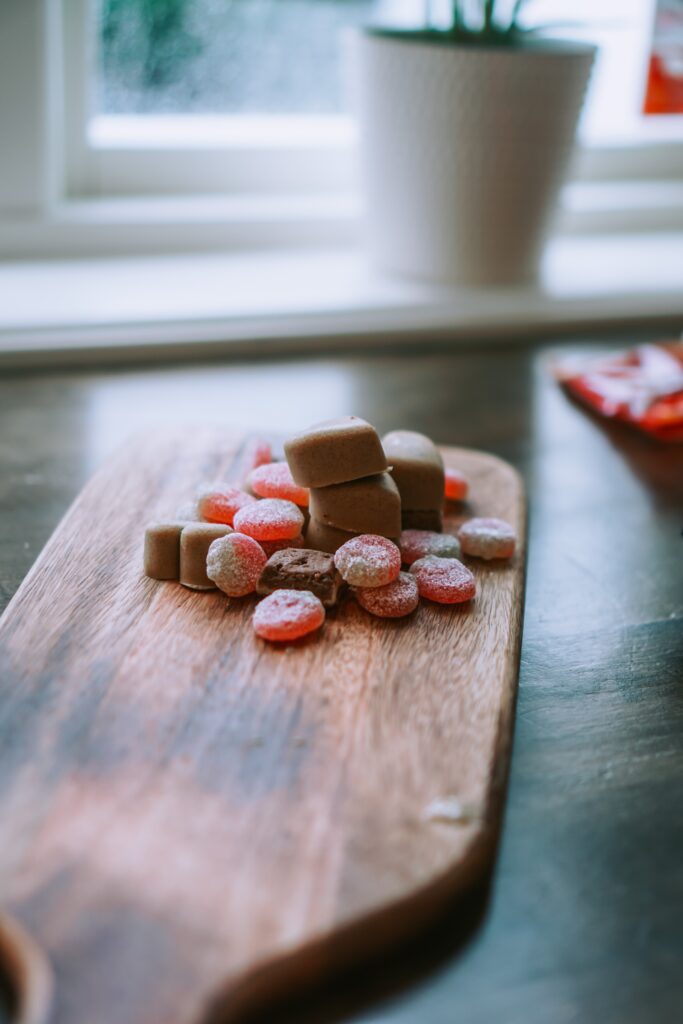Costs & Pricing: A Beginners' Guide
Posted: 21 Jul 2023
Costs & Pricing: A Beginners' Guide
For those just setting out as chocolatiers, this guide will give you a few tips on what to consider when planning your business and setting prices.
Knowing Your Costs
Before you can set prices, it’s important to have a full understanding of all your costs. If you just sell at what you think the market will bear, or guess at the right price, you might stumble on the best price by accident, but it’s more likely that you’ll under-estimate your costs and risk becoming a “busy fool”. Worst case, it might even result in you going out of business.

Step 1 - Know Your Fixed Costs
Before you start, you need to calculate what your overheads are, preferably including your own salary. This is then the target figure you need to make in gross profit to break even. If you initially calculate it on a monthly or yearly basis, you can then translate that into a daily fixed cost, for convenience.
Step 2 - Know the Variable Cost of Your Products
You can do this by costing out the ingredients, packaging, etc. required to make a batch of the product. You should also measure how long it takes you to make the batch and add that in at the appropriate hourly rate. For each product you make, you should end up with a cost per kg or unit.
Step 3 - Know Your Production Capacity
If you are making only a single product or type of product, e.g. chocolate bars or pralines, then this will be the number of bars or kgs of pralines you can make from start to finish each day.
The more different products you make, the more complicated this exercise becomes, because you don’t necessarily know how much of each you might be required to make. However, as you are likely to make products in batches, you can estimate your capacity by saying that I can make, e.g. 3 batches of bars OR 2 batches of moulded pralines OR 4 batches of dipped pralines, in a day.
Alternatively, you might say I can only make one type of product in one day, so if I make bars, I can make 200, if I make moulded pralines, I can make 3kgs, etc.
Once you have worked out your daily fixed cost, the variable cost of all the products you are considering making and how much of each you have the capacity to make, you’re ready to set prices.
Setting Your Prices
Setting the right price is a balancing act, because you will always have a number of different factors to take into account, all of which will have an impact on how much you might be able to sell. A few things worth considering are:
- How strong is my brand?
- What level of quality is my product?
- How unique is it?
- How much demand is there locally for my type of products?
- How much competition do I have in my local area?
- How price-sensitive are my customers?
- How loyal are my customers to me personally?
- How much potential is there to grow my business?
- Do I even want to grow my business?
But, the first priority must always be to cover your costs and not run out of cash!


Example 1:
Let’s say that our chocolatier – let’s call her Sarah – has overheads of £50,000 a year including her salary, so working 250 days a year means that her fixed costs average £200 per day, which is the amount of gross profit she has to make daily to break even, on average.
To keep things simple, let’s also assume that she makes only 100g chocolate bars, which she sells from her premises, and that the variable cost of each bar is £1 (including chocolate, inclusions, packaging and VAT).
Finally, let’s assume that she is not VAT registered, so she doesn’t have to charge VAT on her sales:
| Sale Price per bar | Gross Profit (GP) per bar | Quantity Sold per day | Total GP Generated | Net Profit per day | |
|---|---|---|---|---|---|
| Scenario 1 | £1.50 | £0.50 | 300 | £150 | -£50 |
| Scenario 2 | £2.00 | £1.00 | 250 | £250 | £50 |
| Scenario 3 | £2.50 | £1.50 | 200 | £300 | £100 |
| Scenario 4 | £3.00 | £2.00 | 150 | £300 | £100 |
| Scenario 5 | £3.50 | £2.50 | 100 | £250 | £50 |
| Scenario 6 | £4.00 | £3.00 | 50 | £150 | -£50 |
The figures for quantity sold are just for illustration, but they highlight the normal rule of demand that the higher your price, the less you’ll sell, and vice versa.
So, in the table above, if you only consider net profit, then Sarah can sell her bars at £2.50 or £3.00. But why make 200 bars when you can get away with making 150 and just sell them at a higher price to make the same profit?
Or consider if she had not understood her true costs and just thought that £2 seemed like a good price to sell at, given that her cost was only £1. She would have had to make 250 bars a day, but only £50 in net profit. So, she would have been the archetypical “busy fool”!
Knowing your cost structure allows you to make good pricing decisions.
An equally important consideration is how many bars Sarah thinks she can sell or make. If she can only sell or make 50 bars a day, then to make £200 of GP she would have to make £4 of GP per bar, which means selling them at £5 each. If that is more than people are willing to pay, then Sarah needs to find a way to sell/make more or reduce her fixed costs, make something else or split her time between bars and another profitable product.
Example 2:
To illustrate how VAT changes the picture, let’s continue with Sarah’s business but assume she is also now VAT registered. Assume that her variable cost is £1 (before VAT).
| Sale Price (incl VAT) | Sale Price (excl VAT) | GP each | Quantity Sold | Total GP Generated | |
|---|---|---|---|---|---|
| Scenario 1 | £1.50 | £1.25 | £0.25 | 300 | £75 |
| Scenario 2 | £2.00 | £1.67 | £0.67 | 250 | £167 |
| Scenario 3 | £2.50 | £2.08 | £1.08 | 200 | £217 |
| Scenario 4 | £3.00 | £2.50 | £1.50 | 150 | £225 |
| Scenario 5 | £3.50 | £2.92 | £1.92 | 100 | £192 |
| Scenario 6 | £4.00 | £3.33 | £2.33 | 50 | £117 |
Suddenly, the most she can expect is to just about break even on bars.

As you can see, there are several factors that affect cost and pricing when running a chocolate business. If you’re just getting started and looking for ways to build your business without risking becoming a “busy fool” or being forced to close, then this guide is a good place to start.
Take a look at our other Beginners’ Guides for introductions to melting and tempering, sugars and gelling agents, and more. Or for all of our instructional modules, get the ‘Working with Chocolate’ DVD, created by Keylink Ltd.
.svg)
 white.svg)